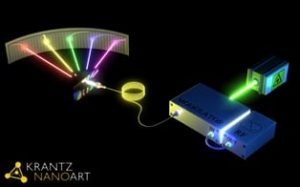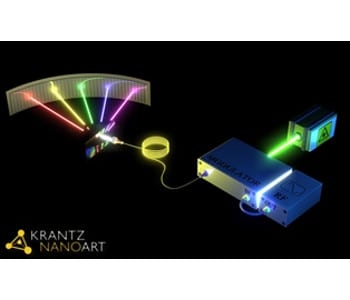Optical frequency comb technology for ultra-broadband radio-frequency photonics
 The outstanding phase-noise performance of optical frequency combs has led to a revolution in optical synthesis and metrology. The broad impact of this tool was recognized with half of the 2005 Nobel Prize in Physics awarded to T. W. Hänsch and J. L. Hall. Since its demonstration in 2000, the applications are expanding, going from molecular spectroscopy and optical clocks to optical and radio-frequency arbitrary waveform generation. However, the ideal characteristics of an optical frequency comb are application dependent. High-repetition-rate optical frequency combs with a relatively broad optical bandwidth, compactness, and low noise level offer a huge new avenue of possibilities in radio-frequency photonics.
The outstanding phase-noise performance of optical frequency combs has led to a revolution in optical synthesis and metrology. The broad impact of this tool was recognized with half of the 2005 Nobel Prize in Physics awarded to T. W. Hänsch and J. L. Hall. Since its demonstration in 2000, the applications are expanding, going from molecular spectroscopy and optical clocks to optical and radio-frequency arbitrary waveform generation. However, the ideal characteristics of an optical frequency comb are application dependent. High-repetition-rate optical frequency combs with a relatively broad optical bandwidth, compactness, and low noise level offer a huge new avenue of possibilities in radio-frequency photonics.
In a review article, Victor Torres-Company from Chalmers University of Technology, Gothenburg, Sweden and Andrew M. Weiner from Purdue University, West Lafayette, USA present the available technologies for the generation and processing of high repetition-rate (>10 GHz) optical frequency combs and highlight their unique characteristics for emerging applications in radiofrequency photonics. These include high-performance filtering of microwave signals, ultra-broadband coherent wireless/optical communications, and high-fidelity synthesis of ultra-broadband waveforms.
The authors assume that, in the future, it is likely that optical frequency comb generators and pulse shapers will be developed in a compact platform to reduce their size, cost, weight, and power consumption, helping to enable applications outside the laboratory. In this direction, the use of photonics devices engineered at the nanoscale is considered as crucial for the next generation of optical communications as well as photonic microwave signal processing systems.
They expect to see in the future high-performance frequency comb generators and programmable devices with more subsystems all embedded on a single chip. Efforts towards hybrid integration constitute a reasonable yet challenging direction.

















